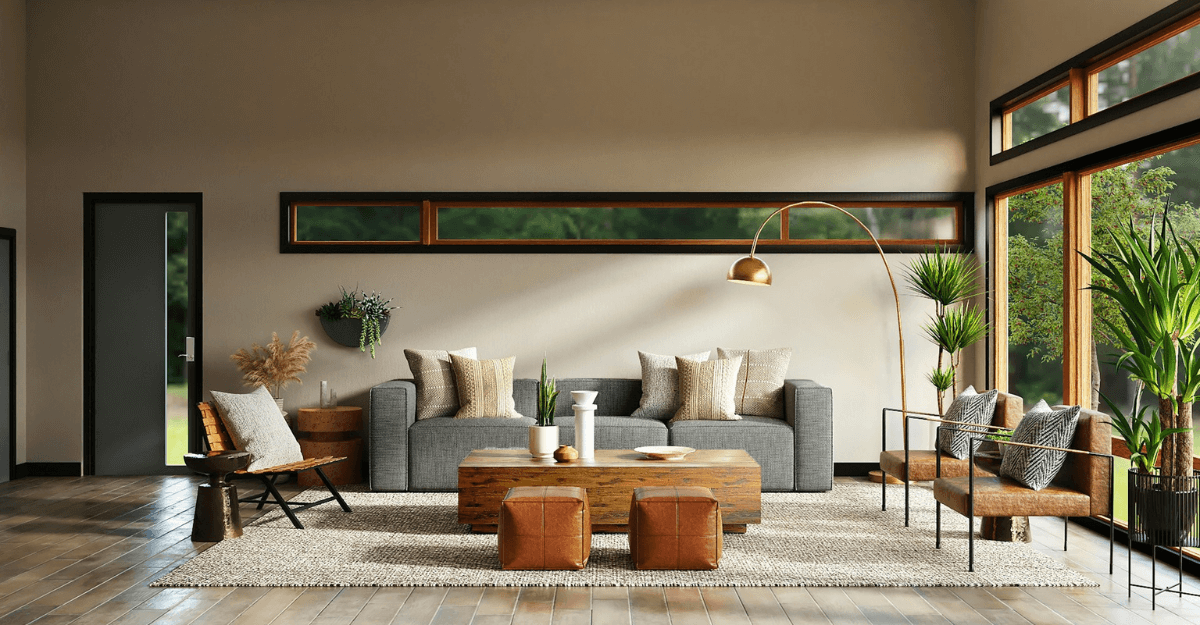Transforming your living space into a beautiful, functional haven doesn’t have to be a daunting task. With the right guidance, interior design can be both enjoyable and accessible. Our comprehensive guide on interior design made easy will walk you through every step, from understanding basic principles to executing advanced techniques. Whether you’re a novice or a seasoned decorator, this guide will equip you with the knowledge and confidence to create stunning interiors effortlessly.
Understanding Interior Design
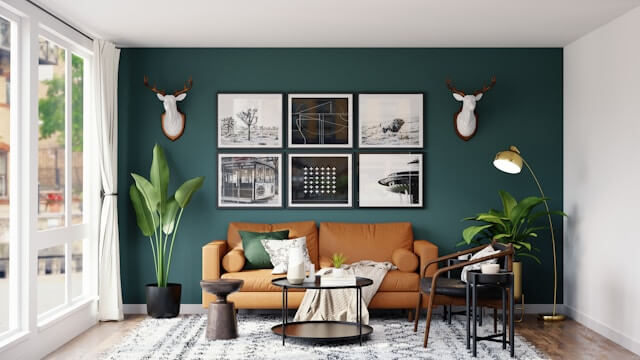
What is Interior Design?
Interior design is the art and science of enhancing the interior of a building to achieve a healthier and more aesthetically pleasing environment for the people using the space. It involves creating layouts, selecting color schemes, furniture, decorations, and accessories to make a space functional and beautiful. Importance of Interior Design A well-designed space can significantly impact the quality of life, productivity, and overall well-being of its occupants. Good interior design balances aesthetics with functionality, making spaces not only beautiful but also practical.Fundamental Principles of Interior Design
Balance
Balance in interior design refers to the distribution of visual weight within a space. It can be symmetrical, asymmetrical, or radial. Achieving balance ensures that no part of the room feels heavier than another, creating a sense of stability.Harmony
Harmony involves creating a cohesive and unified look in a space. This can be achieved through consistent use of color, materials, and styles. Harmony makes a space feel organized and serene.
Proportion
Proportion relates to the scale of objects in relation to one another and the space as a whole. Correct proportion ensures that furniture and decor fit comfortably within a room without overpowering it.
Rhythm
Rhythm in interior design is about creating patterns of repetition and contrast to establish visual interest. This can be done through recurring lines, shapes, colors, or textures.
Emphasis
Emphasis involves creating a focal point in a room to draw the eye. This could be a piece of artwork, a fireplace, or an architectural feature. Emphasis adds interest and anchors the design.
Planning Your Space
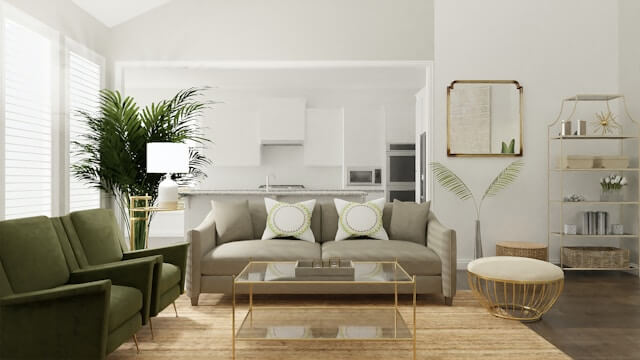
Assessing Your Needs
Before diving into interior design, it’s crucial to assess your needs. Consider how you use each space, what activities take place there, and what you hope to achieve with the redesign.
Creating a Floor Plan
A floor plan is a scaled diagram of a room or building viewed from above. It allows you to experiment with layouts and ensures that furniture and other elements fit well within the space.
Budgeting for Your Project
Setting a budget is essential to keep your project on track. Determine how much you’re willing to spend and allocate funds for different aspects of the design, such as furniture, decor, and labor.
Choosing a Design Style
Popular Design Styles
There are numerous design styles to choose from, including modern, contemporary, traditional, rustic, and industrial. Each style has its characteristics and can be adapted to suit personal preferences.
Finding Your Personal Style
Your personal style reflects your tastes and personality. To find it, gather inspiration from magazines, websites, and social media. Create mood boards to visualize your preferences and narrow down your choices.
Color Theory in Interior Design
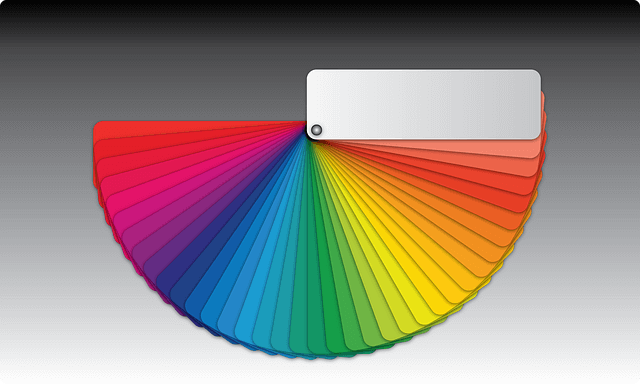
Basics of Color Theory
Understanding color theory is fundamental to creating harmonious interiors. The color wheel helps identify primary, secondary, and tertiary colors, and how they relate to each other.
Using Color Schemes
Color schemes, such as monochromatic, analogous, and complementary, guide the selection of colors that work well together. Choosing the right scheme enhances the overall aesthetic of a space.
Impact of Colors on Mood
Colors have psychological effects and can influence mood and behavior. For example, blue is calming, while yellow is energizing. Consider the mood you want to create when selecting colors for different rooms.
Selecting the Right Furniture
Types of Furniture
Furniture comes in various styles and functions, from sofas and chairs to tables and storage units. Each piece should complement the design style and serve its intended purpose.
Choosing Functional Furniture
Functionality is key in furniture selection. Consider comfort, durability, and how each piece fits into the overall design. Multifunctional furniture is especially useful in smaller spaces.
Arranging Furniture
Proper furniture arrangement enhances flow and usability. Ensure there is enough space for movement and that key pieces are accessible and well-positioned.
Incorporating Textures and Patterns
Understanding Textures
Textures add depth and interest to a design. They can be soft, rough, shiny, or matte. Mixing textures creates a layered and dynamic look.
Using Patterns Effectively
Patterns, such as stripes, florals, or geometric designs, add visual interest. Use patterns in moderation to avoid overwhelming the space, and ensure they complement the overall design.
Combining Textures and Patterns
Combining different textures and patterns can create a rich, engaging environment. Balance is crucial to ensure the elements work together harmoniously.
Lighting Your Space
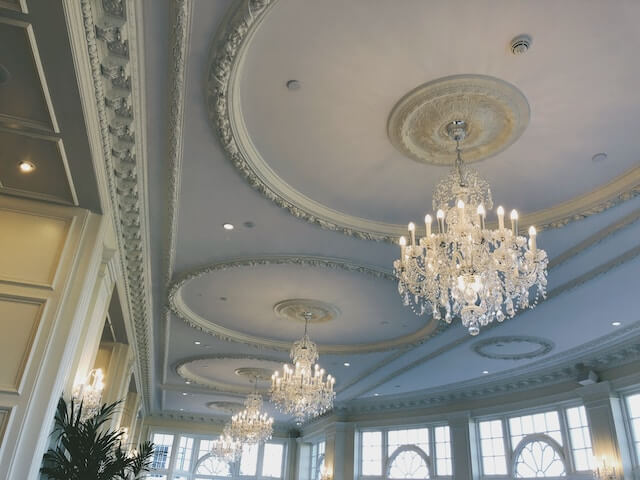
Types of Lighting
Lighting is essential in interior design. There are three main types: ambient (general lighting), task (specific areas), and accent (highlighting features). Combining these creates a well-lit space.
Layering Light
Layering involves using different light sources at various levels to create depth and atmosphere. This approach provides flexibility and enhances the room’s functionality.
Choosing Light Fixtures
Select light fixtures that complement the design style and meet the lighting needs of the space. Consider aesthetics, functionality, and energy efficiency.
Accessorizing with Decor
Selecting Art and Decor
Art and decor add personality and complete a design. Choose pieces that reflect your style and fit the room’s theme. Don’t be afraid to mix different types of decor for a unique look.
Using Plants in Design
Plants bring life and freshness to interiors. They can improve air quality and add natural beauty. Choose plants that suit your lifestyle and the lighting conditions of the space.
Incorporating Personal Touches
Personal touches make a space feel like home. Displaying personal items, such as photographs, souvenirs, and handmade objects, adds warmth and character.
Maximizing Small Spaces
Small Space Layouts
Effective layouts maximize the functionality of small spaces. Prioritize essential furniture and use vertical space to avoid clutter.
Multifunctional Furniture
Multifunctional furniture, like sofa beds and storage ottomans, is ideal for small spaces. These pieces save space and serve multiple purposes.
Storage Solutions
Innovative storage solutions, such as built-in shelves and under-bed storage, help keep small spaces organized and efficient.
Designing Functional Kitchens
Kitchen Layouts
A functional kitchen layout enhances workflow and usability. Popular layouts include the U-shape, L-shape, and galley kitchens.
Choosing Appliances
Select appliances that fit your needs and complement the kitchen design. Consider energy efficiency, size, and features.
Storage Solutions in Kitchens
Maximize kitchen storage with cabinets, pantry solutions, and organizational tools. Efficient storage keeps the kitchen tidy and functional.
Creating Cozy Bedrooms
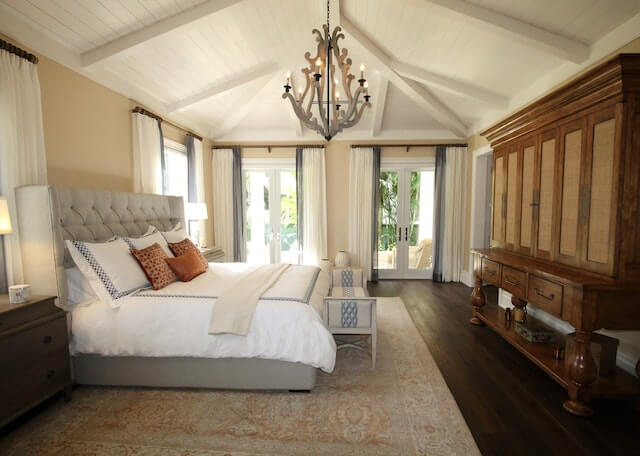
Bedroom Layouts
A well-planned bedroom layout promotes relaxation. Position the bed as the focal point and ensure ample space for movement.
Choosing Comfortable Bedding
Comfortable bedding is essential for a good night’s sleep. Invest in quality mattresses, pillows, and linens.
Lighting in Bedrooms
Layered lighting, including bedside lamps and ambient lighting, creates a cozy and functional bedroom atmosphere.
Designing Inviting Living Rooms
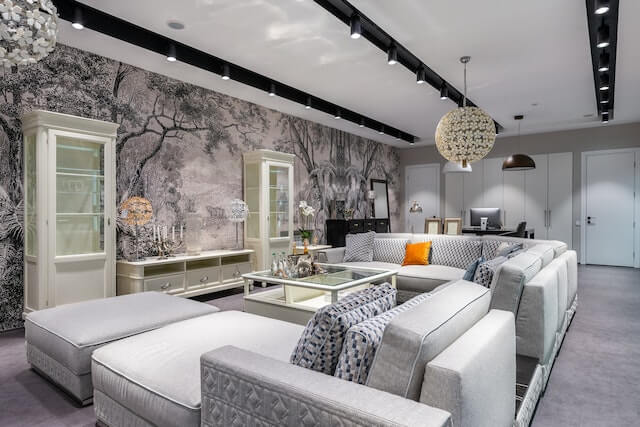
Living Room Layouts
An inviting living room layout facilitates conversation and comfort. Arrange seating to encourage interaction and create focal points with furniture or decor.
Selecting Sofas and Chairs
Choose sofas and chairs that provide comfort and fit the design style. Consider the size, material, and color to ensure harmony with the overall design.
Creating Focal Points
Focal points, such as fireplaces, artworks, or feature walls, draw attention and anchor the living room design.
Functional and Stylish Bathrooms
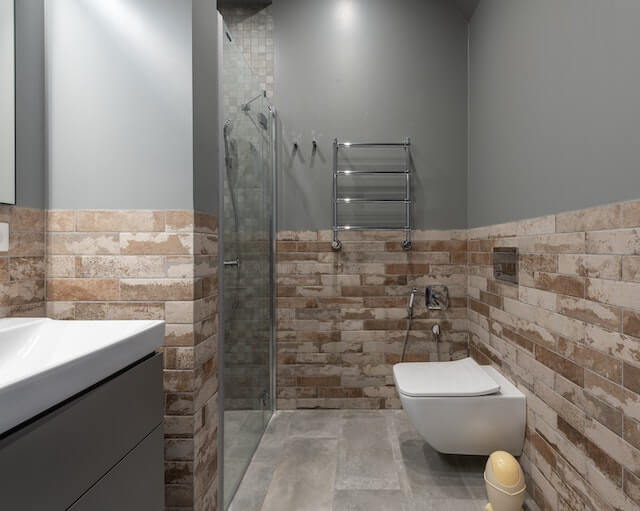
Bathroom Layouts
Efficient bathroom layouts maximize space and functionality. Consider the placement of fixtures and storage solutions.
Choosing Fixtures
Select fixtures that are both functional and stylish. Look for quality materials and designs that complement the bathroom’s theme.
Storage Solutions in Bathrooms
Effective storage keeps bathrooms organized. Use cabinets, shelves, and baskets to store essentials neatly.
Home Offices that Inspire
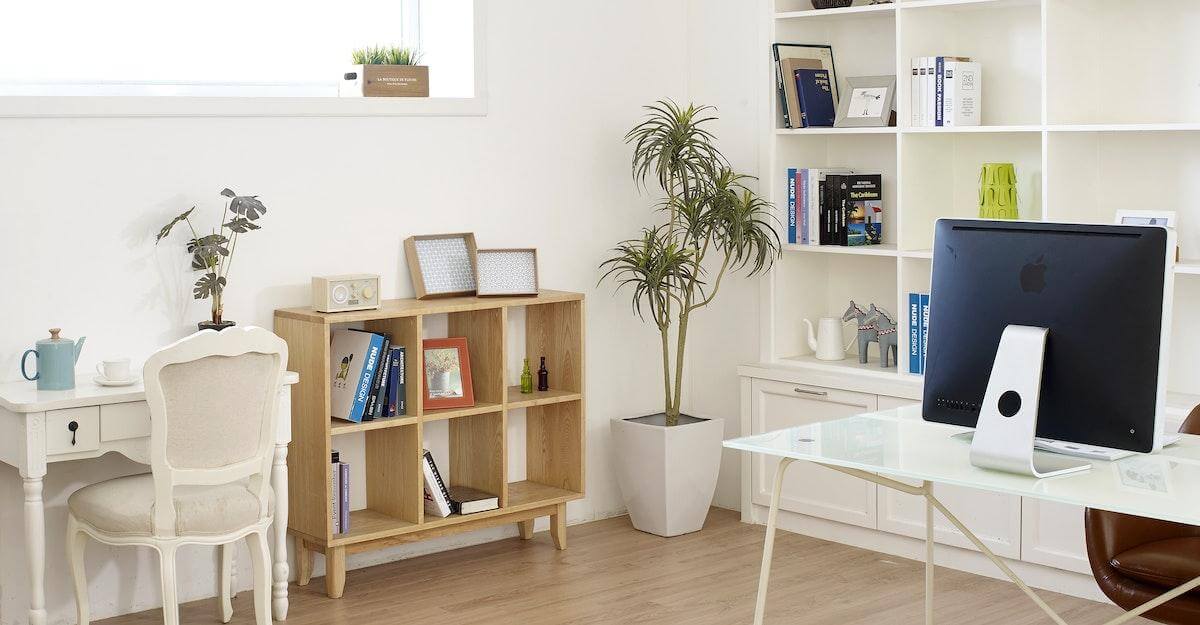
Home Office Layouts
A well-designed home office enhances productivity. Ensure ample workspace, comfortable seating, and good lighting.
Choosing Office Furniture
Invest in ergonomic furniture to support comfort and health. Consider desks, chairs, and storage solutions that fit your needs.
Organizing Your Workspace
A tidy workspace boosts efficiency. Use organizers, shelves, and filing systems to keep your office clutter-free.
Outdoor Living Spaces
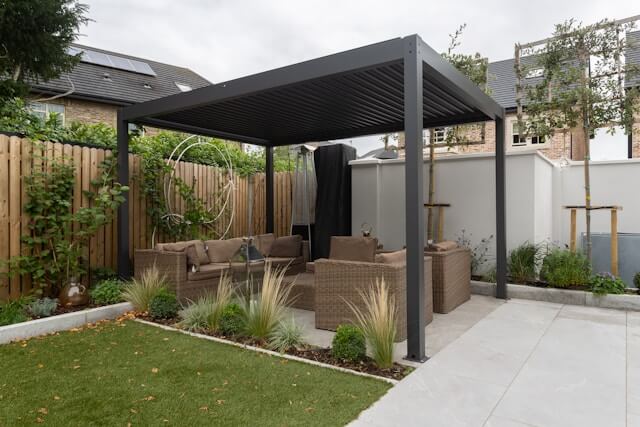
Designing Patios and Gardens
Outdoor spaces extend living areas and offer relaxation and entertainment options. Plan layouts that accommodate activities and provide comfort.
Choosing Outdoor Furniture
Select durable, weather-resistant furniture for outdoor use. Consider comfort and style to create inviting outdoor spaces.
Lighting Outdoor Spaces
Outdoor lighting enhances safety and ambiance. Use a combination of path lights, string lights, and spotlights to illuminate outdoor areas.
Incorporating Technology
Smart Home Devices
Smart home devices, such as smart lighting and thermostats, add convenience and efficiency to interiors. Integrate technology seamlessly to enhance functionality.
Integrating Technology Seamlessly
Ensure technology blends with the design. Conceal wires and choose devices that match the decor.
Future Trends
Stay updated on technological trends to keep your home current. Innovations like smart furniture and advanced home automation are becoming increasingly popular.
Sustainable Interior Design
Eco-Friendly Materials
Use eco-friendly materials, such as recycled wood and non-toxic paint, to create sustainable interiors. These choices reduce environmental impact and promote health.
Energy-Efficient Designs
Incorporate energy-efficient designs, such as LED lighting and energy-star appliances, to reduce energy consumption and costs.
Sustainable Practices
Adopt sustainable practices, like recycling and using renewable resources, to maintain eco-friendly interiors.
DIY vs. Hiring Professionals
Pros and Cons of DIY
DIY projects can save money and offer a sense of accomplishment. However, they require time, skills, and tools. Assess your abilities and the project’s complexity before deciding.
Finding the Right Professionals
Hiring professionals ensures quality results and saves time. Research and select reputable designers and contractors for your project.
Managing Your Project
Effective project management involves planning, coordinating, and supervising the design process. Whether DIY or professional, stay involved to ensure the project meets your expectations.
Common Interior Design Mistakes
Avoiding Design Pitfalls
Common mistakes, such as poor lighting and cluttered spaces, can detract from a design. Plan carefully and seek advice to avoid these pitfalls.
Fixing Common Mistakes
Identify and correct mistakes promptly. Simple changes, like reorganizing furniture or updating decor, can significantly improve a space.
Interior Design Trends
Current Trends
Stay updated on current trends, such as biophilic design and minimalism, to keep your interiors stylish. Adapt trends to fit your personal style and preferences.
Forecasting Future Trends
Anticipate future trends by following design experts and publications. Innovations in materials, technology, and sustainability are shaping the future of interior design.
Adapting Trends to Your Style
Trends are a guide, not a rule. Adapt them to reflect your personality and lifestyle for a unique and timeless design.
Case Studies and Real-Life Examples
Success Stories
Explore success stories to gain inspiration and insight. Learn how others have transformed their spaces through creative design solutions.
Learning from Mistakes
Analyze mistakes to avoid repeating them. Understanding what went wrong in other projects can help you make better decisions.
Inspiring Transformations
Real-life transformations showcase the power of interior design. They provide ideas and motivation for your projects.
Resources and Tools
Essential Tools for Designers
Equip yourself with essential tools, such as measuring tapes, design software, and color swatches, to facilitate your design process.
Online Resources
Utilize online resources, like design blogs, forums, and virtual design tools, for inspiration and guidance.
Books and Magazines
Books and magazines offer valuable insights and trends. Build a library of design literature to stay informed and inspired.
FAQs
How do I start with interior design? Begin by understanding the basic principles of interior design. Assess your needs, create a floor plan, and choose a style that reflects your personality.
What are the key principles of interior design? The key principles include balance, harmony, proportion, rhythm, and emphasis. These principles guide the creation of cohesive and aesthetically pleasing spaces.
How do I choose the right color scheme? Use the color wheel and consider color theory. Choose a scheme that suits the mood you want to create and complements your design style.
What should I consider when selecting furniture? Consider functionality, comfort, and style. Ensure the furniture fits the space and serves its intended purpose.
How can I make a small space look larger? Use multifunctional furniture, effective storage solutions, and light colors. Maximize vertical space and keep the area clutter-free.
Should I hire a professional designer? Hiring a professional can ensure quality results and save time. Assess the complexity of your project and your own skills before deciding.
Conclusion
Interior design doesn’t have to be complicated. With the right knowledge and tools, anyone can transform their space into a beautiful and functional environment. Our guide on interior design made easy provides you with all the information and inspiration you need to master interior design effortlessly. Start planning your dream space today and enjoy the process of creating a home that truly reflects your personality and lifestyle.

